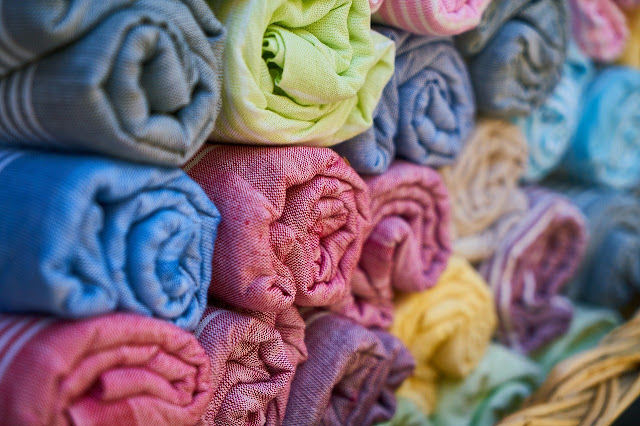A research team from Huazhong University of Science and Technology in Wuhan, China, succeeded in developing a new smart cloth fabric, which can adapt to changing weather conditions, as it can heat and cool the body of the wearer according to the weather condition, to make the wearer feel cold in the hot midday when a storm comes A cool evening feels warm.
According to the British newspaper Daily Mail, Chinese researchers have created a new type of smart fabric, which they named PEG, using many different chemicals, which are silk fabric, chitosan taken from the outer skeleton of the marine oyster, and colored fibers with Porous microscopic structures.
Then they filled the pores of the tissue with a polyethylene glycol compound that absorbs and releases heat energy, then they coated the filaments of the fabric using non-toxic, non-flammable organic polymer siloxane, to prevent the internal fluid from leaking out.
This technology can be extended to any fabric that needs to manage temperatures other than clothing, such as tents, canopies, curtains, carpets, shoes, bedsheets, etc., to reduce the need for air conditioning or heat, Professor Guangming Tao, in his interview with the British newspaper, explained. This leads to energy savings.
If it is used in curtains, for example, it can absorb thermal energy to keep the house cool in hot weather, or release heat to warm the house on cold days, Tao said.
Smart textiles can either warm or cool the body, cannot perform both functions together, and are light in weight, strong in texture, and flexible, and can be dyed in different colors.
It does not depend on an external energy source when heating and cooling the wearer's body, as does traditional smart textiles, which usually require external energy sources, which makes them less practical.
The researchers suggest that the process of making smart tissues be compatible with the current textile industry, as it can be expanded and wholesaled.
The results of the study, which was published in the American scientific journal ACS Applied Materials & Interfaces, concluded that this new tissue is more practical for personal thermal management and thus overcomes the scope of previous clothes.

Post a Comment